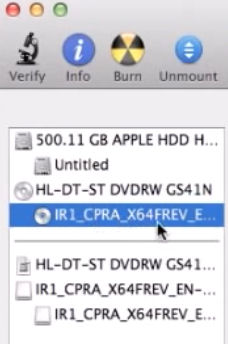Hdiutil To Create An Iso

There are generally four ways to create a disk image on an OS X box: • Disk Utility - The on-screen prompts will guide you, but it will by default create a.dmg, which is an OS X-specific file format. Disk Utility will also create an ISO (.cdr extension) if you select the 'CD/DVD Master' option before creating the image. You can rename the extension (to.iso) after creation if desired. • Roxio Toast - The de facto third-party standard in creating optical media on Mac OS for over a decade, it will create almost any CD or DVD format you want. • The hdiutil command-line utility, which will, in fact, create every format that Toast supports, for free, though it is far less pretty. If you want to create an ISO with this tool, use hdiutil makehybrid -iso -joliet -o Image.iso /input_path • There is a fourth, extremely direct command-line way using dd that sysadmins might know: dd if=/dev/disk1 of=Image.iso.
As mentioned in other answers you can use Disk Utility or dd to create an ISO image of the original disc. But if the disc is copy protected, it contains decryption keys in the lead-in area of the disc which cannot be read directly, and are not part of the ISO image. So if you burn a new disc with this image it will not play on a standard DVD player. Nevertheless, you can play it using a program like VLC which doesn't need the keys, since it is able to circumvent the encryption.
Create bootable ISO from HighSierra Installer Raw. Hdiutil create -o /tmp/HighSierraBase.cdr -size 7316m -layout SPUD -fs HFS+J. How to Create an ISO with hdiutil. The most reliable method is uses hdiutil, here is the syntax: hdiutil makehybrid -iso -joliet -o image.iso /path/to/source. If everything goes fine, the end step will create a file on your Desktop named “Mavericks.iso“. This image file is what you needed, you can use the Disk Utility to convert it to DMG file if needed.
If you want a program that will copy the disc to the hard drive and also remove the copy protection so that you can burn it to a new unprotected disc, will do that, but it looks like it hasn't been updated in a while. (Only a PowerPC version is listed.) For storing on your hard drive you might find it more useful to transcode the content to unencrypted H.264 using. This will save you a lot of disk space compared to storing the MPEG-2 content that is used on DVD-Video discs. However, it will not preserve the DVD menus, and if you want to burn a DVD that you can play on a standard DVD player then you would have to convert it back to MPEG-2. I have found that dd produces the same ISO image as some tools on the PC, so I have been using dd, and below is a quick list of commands: • diskutil list • diskutil unmount /dev/disk1 • dd if=/dev/disk1 of=DiscImage01.iso • diskutil eject /dev/disk1 The details: • In Spotlight, type in Terminal and you will see the app for the UNIX console.
(or go to Finder and use Applications ->Utilities ->Terminal). • diskutil list to see which drive the optical drive is. It might be /dev/disk1 or /dev/disk2, etc, depending on whether you have other drives, such as USB flash drive or SD card. The command will show the name, as well as the size of the disc, and it should be typically 4GB to 8.5GB.
• use diskutil unmount /dev/disk1 to unmount the drive, and this command doesn't require a sudo and therefore doesn't need the administrator's password. • dd if=/dev/disk1 of=DiscImage01. Encyclopedia Of Kettlebell Lifting here. iso to create the ISO image in your current directory (which is your home directory if you just started the Terminal app without doing any cd command).
It will take a while and you will see the optical drive's light blinking, if the drive has such a light. • diskutil eject /dev/disk1 to eject the disc for some optical drive that won't let you eject manually but requires OS X to eject the disc. In addition, since dd can overwrite any existing file, so you might want to do chmod 444 *.iso so that all.iso files are only readable but not writeable, and if one month later you issue a dd command that might overwrite an existing file, it actually will come back with a 'Permission denied' error so that you won't overwrite that existing file.